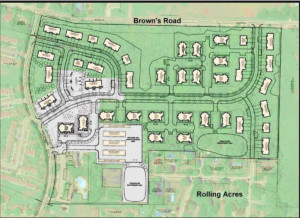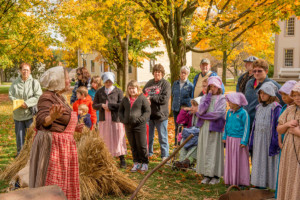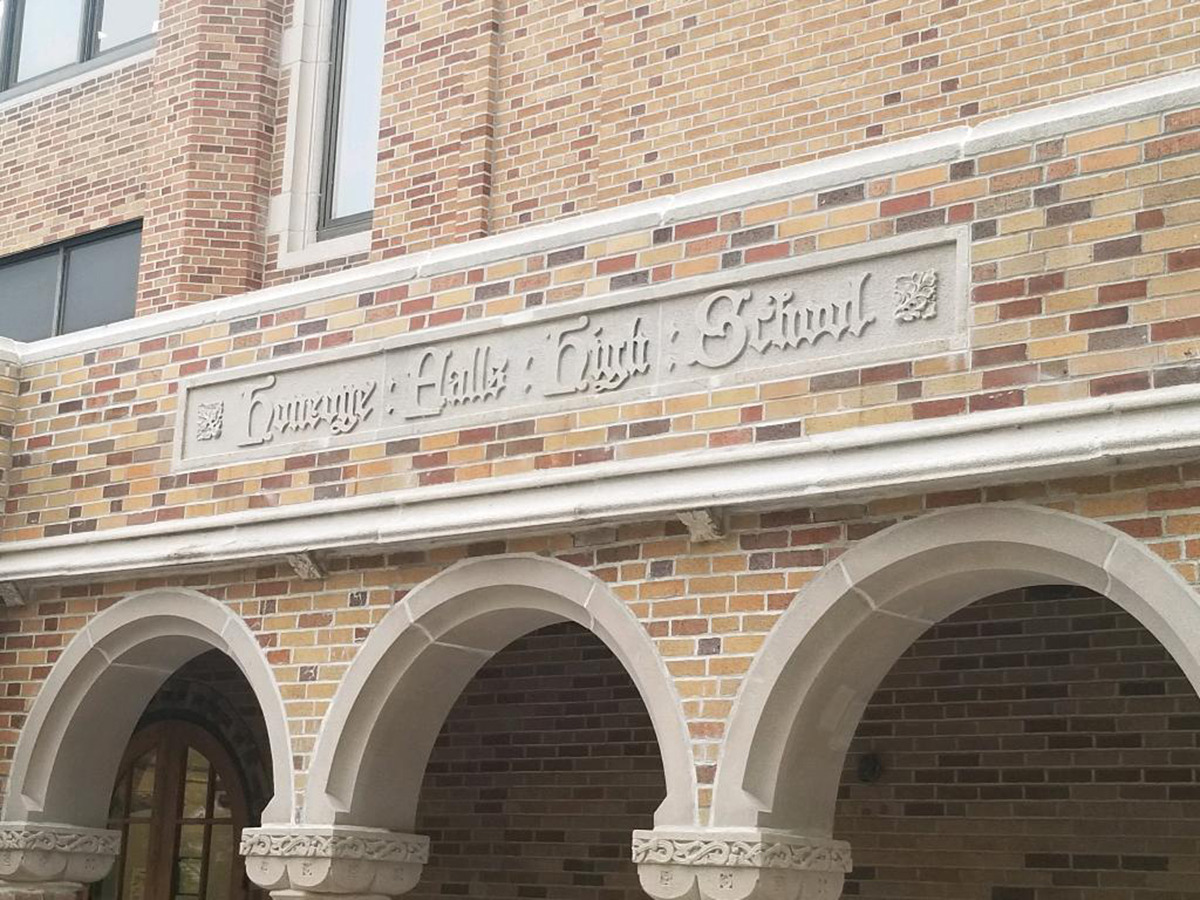3 Examples Showcased
More Than Merely “Virtue Signaling” These Acts Produced Results
Attendees Learn Ways Their Communities Can Participate

Studio shot of the 3rd Greater Western New York (Virtual) Town Hall Meeting the evening of Wednesday, March 9th. Pictured are the host Chris Carosa, Publisher of the Mendon-Honeoye Falls-Lima Sentinel, and behind him from left to right: Earl “Skip” Gingerich, Jr, Supervisor of the Town of Marilla (Erie County); John Riggi, Councilman from the Town of Yates (Orleans County); and, Matt Cole, Superintendent of the Livonia Central School District (Livingston County). Source: Pandamensional Productions/Mendon-Honeoye Falls-Lima Sentinel
Greater Western New York— March 9, 2022 — “What can the Greater Western New York Region do to exercise its independence?” That was the question posed at the Winter 2022 Greater Western New York (Virtual) Town Hall Meeting held the evening of Wednesday, March 9th. Chris Carosa, Publisher of the Mendon-Honeoye Falls-Lima Sentinel, hosted the event that was co-sponsored by nearly a dozen newspapers in the Western New York District of the New York Press Association, including the Mendon-Honeoye Falls-Lima Sentinel, the Akron Bugle, the Alfred Sun, The Batavian, Neighbor-to-Neighbor newspapers (including the Arcade Herald, the East Aurora Advertiser, the Springville Journal, Warsaw’s Country Courier, and the Franklinville Mercury-Gazette), and the Johnson Newspaper Corp’s western New York papers (The Daily News and the Livingston County News). The event was free and open to all residents of the Greater Western New York Region and almost two hundred people signed up in advance to attend the event.
The meeting started with three keynote speakers, all local government leaders, who have real-life experience in successfully fighting to maintain local control. They presented positive examples of how they worked within the existing rules to methodically challenge New York State (and in one case, their own county). They each explained the event that triggered them, the actual action they took, and then what resulted from taking that action. While their triggers, their stories, and their actions, may have been different, they all address this issue of “home” or “local” rule.
Each agreed independence is a legitimate discussion and they all agreed the priorities of New York City and Albany politicians are not the same as the priorities of Western New Yorkers, especially those who reside in non-urban areas.
Earl “Skip” Gingerich, Supervisor of the Town of Marilla, began with the story of his town’s frustration with Erie County’s mask mandate (which predated the State-wide mandate by a month). “I was in the Town Hall when it came over the news. Immediately the Town officials that were here told me that they had had enough, and they were not going to comply. They said, ‘This is it!’”
With much support from its residents, the Town of Marilla took action through resolutions. According to Gingerich, “It provided a tool for other communities and even counties to say they were not going to comply.”
John Riggi, who serves on the Town Board in the Orleans County town of Yates, said his story begins in October of 2014 when New York State and developers “surreptitiously approached landowners and residents” with the intention of usurping local authority to place wind turbines in the town that borders on Lake Ontario. “I was not one of those guys to really want to get involved in a lot of things, I just wanted to live and be left alone,” said Riggi. But events overtook his personal desires. “It was very clear to me that we had to fight for home rule and that’s what I ended up doing.”
Riggi’s fight continues to this day, but his use of home rule resolutions has been mostly successful. When the State and other interested parties started to play hardball, the Town of Yates and 30 other municipalities brought in the national media, including a major news network. Riggi remains concerned about the motives of the State on this and other issues. “The State is trying to destroy the public in this course via its attack on Home Rule,” he said. “They’re going to come for all of us. Sooner or later, they’re gonna hit something that’s near and dear to you. Then you’re going to have to fight. And when you fight, you can’t stop.”
Matt Cole, Superintendent of Livonia Central School District led off with a sentiment many who live in the Greater Western New York Region are quite familiar with: “Anytime I work on the national level or have to travel, I really feel compelled to share that Livonia is not New York City. I have to describe Western New York and that it’s five hours away from New York City. The perspective of New York being all one New York is certainly something I always feel I need to differentiate”
Cole described how, on February 2, 2022, “we came together as Livingston County superintendents, as did other rural regions across our State to draft a letter to Governor Hochul and New York State Farm and Health Commissioner Bassett asking that we be given the appropriate guidance for an exit strategy regarding all mitigation measures and not to include mandates but include recommendations in guidance.” The following week, the Livingston County Board of Supervisors passed a resolution in support of this letter.
Cole summed up the feelings the three speakers and much of the attendees of the Town Hall when he said, “There’s really no modern management approach that advocates centralized decision making from legislators, governors, or commissioners in Albany, nearly 200 miles away from home here. Modern management approaches recommend that those closest to the problems are in the best position to creatively and collaboratively find the most effective sustainable solutions.”
After the individual presentations, the three convened a panel moderated by Chris Carosa. Members of the audience were able to ask questions through the moderator and plenty of questions came in. One dealt with a common concern about resolutions being only “virtue signaling.” The speakers explained through their experience that Home Rule has some teeth if local leaders are brave, tenacious, and committed.
The final portion of the meeting (not included in the replay) opened up the discussion to all the attendees. Among the topics talked about included the unfunded electric school bus mandate and the fear that the State might ban firewood.
Of the three Greater Western New York Town Hall Meetings held since last July, attendees agreed this was the most engaging and most informative, with real problems address and real solutions outlined. There will be three more Town Hall meetings scheduled in 2022. Carosa promised the Sentinel would look into the possibility of an in-person event during the summer. Those interested can visit GreaterWesternNewYork.org to learn more.
The event replay can be viewed under the Event’s Tab at GreaterWesternNewYork.org.
# # #
The Greater Western New York Region comprises the 17 westernmost counties of New York State and was formally defined by the Treaty of Hartford on December 16, 1786 with the creation of Preemption Line. These counties include: Allegany, Cattaraugus, Chautauqua, Chemung, Erie, Genesee, Livingston, Monroe, Niagara, Ontario, Orleans, Schuyler, Seneca, Steuben, Wayne, Wyoming, and Yates.




